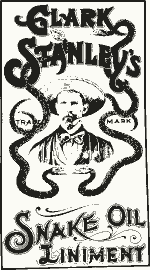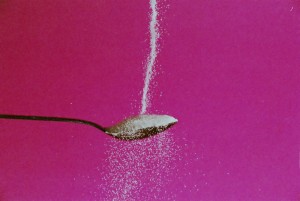Dietary supplements are huge business in this country. Over half of Americans take some sort of supplement such as a multivitamin, calcium, Vitamin D, Vitamin E, chromium, iron, zinc, and/or any number of various such nutrients. Consumers spent $26.7 billion on supplements in 2009. We take supplements for weight loss, bone health, cardiovascular health, athletic performance; and we may take them in order to avoid prescription medicine. Recent research may make you reevaluate your view of supplements.
Vitamin E and prostate cancer
First, some information from an article in the Atlantic called Are Supplements Killing You? The article looks at two studies. The SELECT study is the first one discussed. The results of the trial were recently published in the Journal of the American Medical Association. The aim of the study was to see if Vitamin E and/or selenium supplementation offered a protective effect from prostate cancer. The study followed 35,000 men aged 50 and up split into three groups: one group took Vitamin E, one group took selenium, one group took both. Participants were tracked from 2001 to 2008. The study was stopped in 2008 because rather than finding a protective effect, there were indications that cancer risks were going up. The pertinent details are these; emphasis is mine:
“The recently published article included results as of July 2011. It found an increase in new prostate cancers among all three groups taking supplements, with the increase only significant in the vitamin E group. That group showed a 17 percent increase in the rate of prostate cancer compared to the placebo group.“
An unclear picture for women and supplements
The Atlantic article also discusses the Iowa Women’s Health Study, which has generated some controversy. This study looked at the effect of taking vitamin and mineral supplements on mortality on nearly 39,000 U.S. women aged 55 to 69 and used information collected from 1986 through 2008
At the start of the study, 66% of the study subjects reported using at least one supplement. This increased to 85% in 2004, with 27 percent reporting use of four or more supplements.
The study examined the effect of taking 14 individual supplements and also a multivitamin. The researchers concluded that women who took any of six supplements or a multivitamin had a slightly higher risk of death over the study period:
- Multivitamins were associated with a 2.4 percent higher risk of earlier death
- Vitamin B6 gave a 4.1 percent higher risk
- Folic acid gave a 5.9 percent higher risk
- Iron gave a 3.9 percent higher risk
- Magnesium gave a 3.6 percent higher risk
- Zinc gave a 3 percent higher risk
- Copper gave an 18 percent higher risk
- Calcium gave a 3.8 percent lower risk of death
Do the results surprise you? They surprised a lot of other scientists as well. The controversy centers around the statistical methods used to analyze the data. Though I would love to be able to explain the fine details of this issue to you, I definitely cannot do it. (Sometimes I need a calculator to count my fingers and toes.) Read the Atlantic article to learn more or you can hop over to the Perfect Health Diet site and see a very detailed breakdown and critique of the study. If you scroll down just past the picture of the duckling trying to eat a fly, you’ll find it. (The Perfect Health Diet is a pretty interesting concept. Learn more about it here.)
One of the key elements here is that it’s an observational study, not an intervention study. That means the researchers simply observed the subjects. They didn’t try to change their behavior. So while the data may seem to suggest that taking these supplements caused early death, it would be a mistake to draw that conclusion. (One possibility is that some of the women were ill and they started taking supplements; they then died from the illness.) The article also states, “In general, when an effect is present in some statistical models and absent in others, it means that if the effect actually exists, it’s a small one.”
A closing comment was made by Robert M. Russell, M.D., special expert to the Office of Dietary Supplements (ODS) at NIH and former senior scientist and director of the Jean Mayer USDA Human Nutrition Research Center on Aging at Tufts University:
“In general, what we have learned from an accumulating database from both observational epidemiology and interventional studies is that the vitamin and minerals are safe to take in RDA amounts (as are contained in most over the counter multivitamin-multimineral preparations). Further, we have learned that taking large amounts of single nutrients or nutrient combinations often lead to chronic undesirable toxic effects with implications for chronic disease such as cancer. We have seen this with beta-carotene with a stimulation of lung cancer at high doses, and now we are seeing a similar picture with high dose vitamin E vis-a-vis prostate cancer.”
“So what is the best advice for the public? Stick to a varied diet, if you want to take supplements, take a multivitamin-multimineral that has RDA amounts. Don’t jump on the silver bullet of the day single nutrient band-wagon until there is enough evidence for both efficacy as well as long term safety. That said, in order to get RDA amounts of calcium and vitamin D, a single nutrient supplement may be necessary for some people. Following the nutrient guidance of our National Academies of Science is my best advice.”
So it seems that optimal health can be had largely by eating the right foods. Focusing on the individual nutrients doesn’t seem wise. There certainly doesn’t seem to be any miracle supplement out there. The miracle is the interaction between the thousands of compounds found in our food. If we go beyond our needs and add more of a particular nutrient then we may have trouble.



